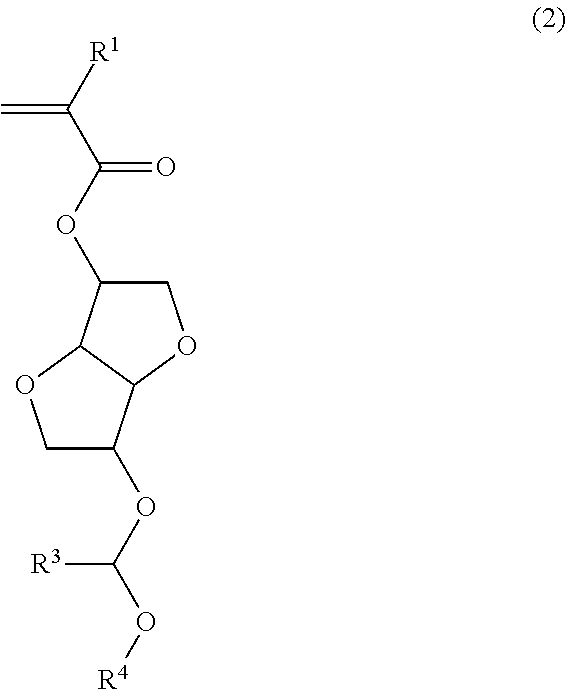Polymerizable ester compound, polymer, resist composition, and patterning process
a polymer compound and ester compound technology, applied in the field of polymer ester compound, polymer, resist composition, and patterning process, can solve the problems of insufficient rectangularity and substantial roughness of the surface and sidewall of the pattern, the inability of prior art resist materials to form patterns, and the unevenness of fine line size, etc., to achieve good development properties, improve the effect of exposure dose dependency, and improve the effect of pattern density dependency (or optical proximity effect)
- Summary
- Abstract
- Description
- Claims
- Application Information
AI Technical Summary
Benefits of technology
Problems solved by technology
Method used
Image
Examples
synthesis example 1
[0139]Polymerizable ester compounds within the scope of the invention were synthesized according to the following formulation.
synthesis example 1-1-1
Synthesis of Starting Alcohol 1
[0141]A mixture of 103 g of isosorbide, 91 g of N,N-diisopropylethylamine, 36 g of acetonitrile, and 40 g of tetrahydrofuran (THF) was heated at 40° C., to which 14.2 g of methoxymethyl chloride was added dropwise. Stirring was continued at 40° C. for 10 hours, whereupon sodium hydrogen carbonate aqueous solution was added to quench the reaction. This was followed by ordinary aqueous workup and purification by silica gel column chromatography, obtaining 51 g of starting alcohol 1 (yield 89%).
[0142]It is noted that the product as purified consisted of a major isomer of the above formula and a minor isomer in a ratio of 58:42 mol %.
PUM
| Property | Measurement | Unit |
|---|---|---|
| refractive index | aaaaa | aaaaa |
| feature size | aaaaa | aaaaa |
| roughness | aaaaa | aaaaa |
Abstract
Description
Claims
Application Information
 Login to View More
Login to View More - R&D
- Intellectual Property
- Life Sciences
- Materials
- Tech Scout
- Unparalleled Data Quality
- Higher Quality Content
- 60% Fewer Hallucinations
Browse by: Latest US Patents, China's latest patents, Technical Efficacy Thesaurus, Application Domain, Technology Topic, Popular Technical Reports.
© 2025 PatSnap. All rights reserved.Legal|Privacy policy|Modern Slavery Act Transparency Statement|Sitemap|About US| Contact US: help@patsnap.com



